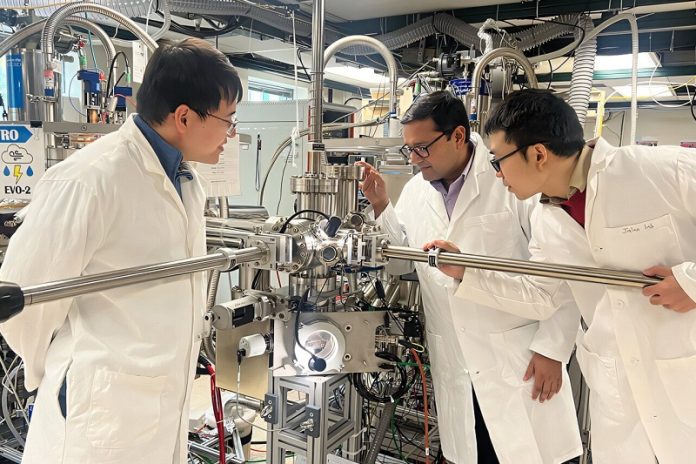
Researchers at the University of Minnesota have created a groundbreaking material that could transform the future of electronics by making them faster, more efficient, and transparent.
This material, detailed in the journal Science Advances, has an increased “band gap,” allowing it to conduct electricity effectively while also remaining transparent to both visible and ultraviolet light.
This unique combination breaks previous records in semiconductor design, marking a major step forward for the trillion-dollar electronics industry.
Semiconductors, materials that conduct electricity under certain conditions, power most of our everyday electronics, from phones to medical devices.
The development of “ultra-wide band gap” materials like this new one is essential because these materials can handle extreme conditions without losing efficiency.
This means electronics made with these materials can operate at high performance in demanding environments, such as high temperatures, making them more durable and robust.
The new material, a transparent conducting oxide, has a unique thin-layer structure that improves transparency without compromising on conductivity.
As our technologies become more advanced, especially with the rise of artificial intelligence, the need for materials that can perform at high speeds and under challenging conditions has grown significantly. This breakthrough offers a promising solution.
Bharat Jalan, a professor and lead researcher in this project, described the material as a “game-changer” for transparent electronics.
According to Jalan, this innovation overcomes limitations that previously prevented high-performance devices from operating in the deep-ultraviolet spectrum. This opens up possibilities for advancements in high-power electronics and optoelectronic devices that work in extreme conditions, such as high-power transistors and quantum computing.
Ph.D. students Fengdeng Liu and Zhifei Yang, who co-led the study, shared that they were astonished by the material’s nearly flawless performance for electronic applications.
By running detailed tests, they ensured there were no defects, which allowed the material to function at its peak. Using electron microscopy, the team confirmed the material’s clean structure, showing how oxide-based materials can become powerful semiconductors if defects are minimized.
The research team also included experts from the University of Minnesota and the California Institute of Technology.
Together, they believe this new material could pave the way for faster and more efficient devices, giving a boost to industries dependent on high-performance electronics.
As digital technology continues to evolve, developments like this provide a foundation for next-generation electronics and computing solutions that can operate seamlessly in extreme environments.
Source: University of Minnesota.



